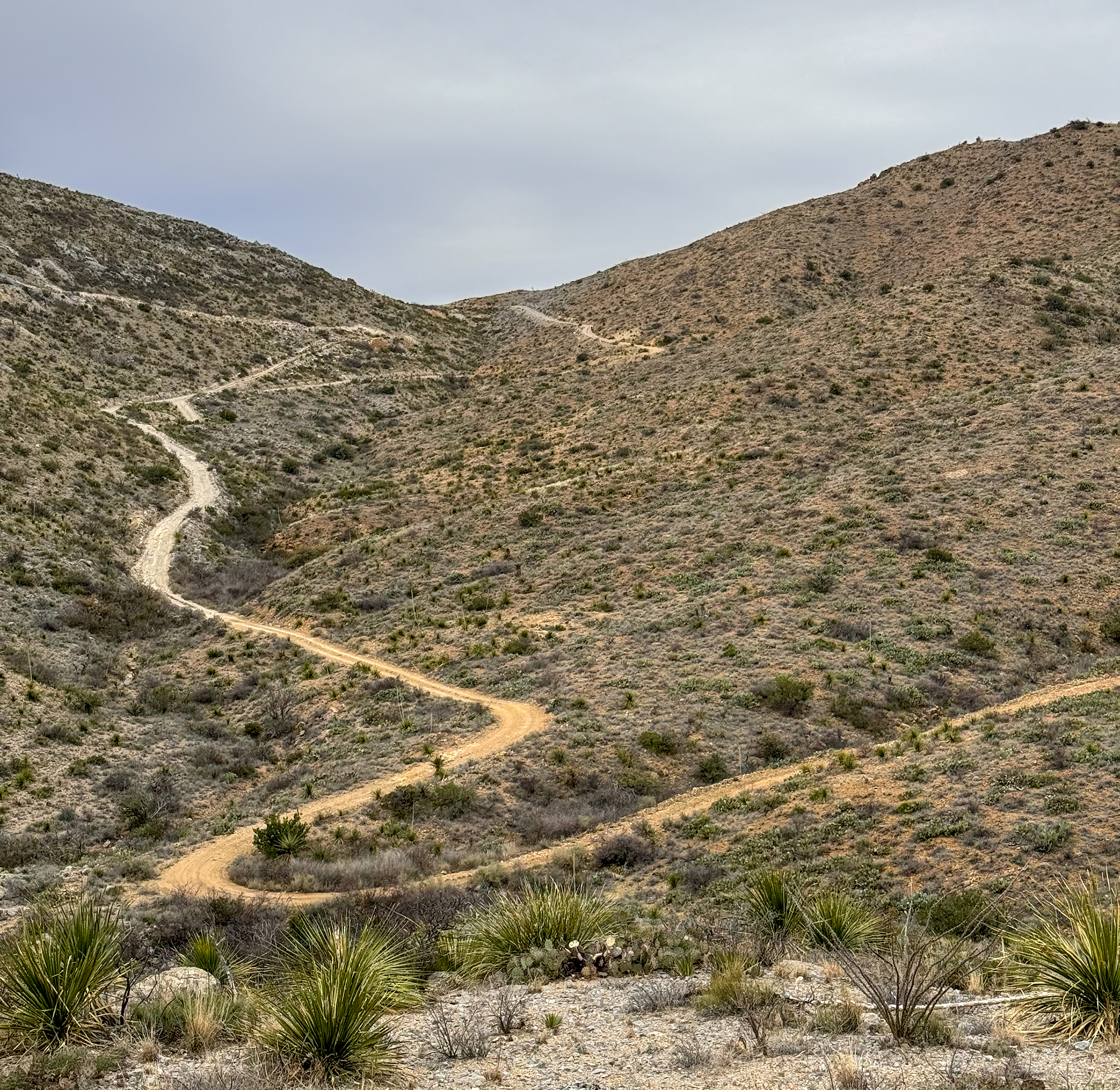Dawn was spreading like a giant egg yolk on the horizon when we reached the gate. It was 16 miles from State Highway 118 to the office where visitors pick up the key, past the Bad Rabbit Café, then a bit farther on unpaved roads to the Christmas Mountains property. The key was attached to a long piece of wood, like the restroom key at old gas stations.
My friend drove the white rented Jeep through, and I locked the gate behind us. For four hours, we’d have the Christmas Mountains, a small range on the northern boundary of Big Bend National Park, near Terlingua, to ourselves. The locked gate enforced the one-group-at-a-time rule: The 3.5-mile road is only a few feet wider than a car and bends back on itself like a coiling snake. There’s no place to turn around until you get to the 5,728-foot summit. A broken-down vehicle would back up traffic until help arrived, and, in the beautiful emptiness of the Big Bend, that could be a long time.

It’s been more than 30 years since the Richard King Mellon Foundation and The Conservation Fund donated the Christmas Mountains property—9,269 acres of former ranchland—to the state for public recreation purposes. Only in the last few years have the mountains’ current owners and stewards, the Texas State University System and the Texas Land Conservancy, been able to increase access for researchers to study the biology, geology, and cultural history of the property. Rare plants, abandoned mercury mines, Lipan Apache-related sites, and 500 million years of geologic history are just part of what attracts researchers.
But Big Bend-loving Texans are lucky that these mountains in Brewster County have remained in public hands at all. Ex-Texas Land Commissioner Jerry Patterson tried to sell the arid, remote property to private owners in 2007 and again in 2010 because, he said, maintaining the land was too expensive, the conservation covenants on it were too restrictive, and it was too hemmed in by surrounding private property. Some 3,000 people emailed Patterson objecting to the proposed sale. Mellon Foundation officials said if the sale went through, the state should never again expect donations from their coffers. Even some of the commissioner’s fellow Republicans found his efforts repugnant.
Following the outcry, the state General Land Office announced in 2011 that the property had instead been transferred to the Texas State University System (comprising Texas State, Sam Houston State, Sul Ross State, Lamar, and several other institutions) to use as an outdoor classroom and preserve. But it took another decade for the Legislature to appropriate the $11.2 million needed to build a field research station at the base of the mountains, just outside the preserve. Engineering work has now started on that station. The Texas Land Conservancy is charged with monitoring the preserve’s habitat and wildlife.
Since 2013, scientists have been meeting for symposia in West Texas to share research about the property. BotanistDavid Lemke organizes the events, which include trips up into the mountains. He’s been working for years on a survey of local vegetation, including “an interesting little milkweed vine” that’s only been found at one site in Mexico and one other site in Texas.
For about a decade now, researchers and other visitors have been able to access the Christmas Mountains with help from a key group of private property owners. At the 200,000-acre Terlingua Ranch resort, subdivided into small-acreage plots, the Terlingua Ranch Lodge oversees access to the summit road. There is no fee, but visitors must reserve a time slot and register at the resort office. With only two slots per day, resort manager John Sellers said, it’s wise to call ahead of time, especially around holidays. Vehicles must be four-wheel or all-wheel drive with high clearance. Hiking, biking, and horseback riding are also allowed.
For those with a tolerance for heights, boulders, and skinny roads, the drive to the summit is worth the effort. In our case, we left Alpine at 6 a.m. to be at the gate by 8. In the flat approach through Terlingua Ranch’s scattered homesites, the rising sun backlit an adjacent peak and glinted off the window panes of a mobile home.

On the summit road, our top speed was just a couple of miles per hour, the Jeep moving like a large bear beneath us, one paw at a time over the boulders. The first vista, of West Corazon Peak’s slender cone and tilted strata of rock, like a geologic quilt, left me feeling off-balance. At the top, beyond a rock cairn, the view opened to the south across the vastness of Big Bend National Park to the Chisos Mountains, Santa Elena Canyon, and Mexico.
A hundred years ago, per Sellers, this land housed mercury mines that alongside others nearby produced 80 percent of the world’s quicksilver. Thousands of years before that, sophisticated trade routes established by Indigenous peoples stretched from here as far away as Guatemala. Today, the land’s present stewards say they’re planning to invite writers, photographers, and painters to share the Christmas Mountains with the world.







